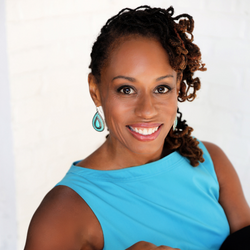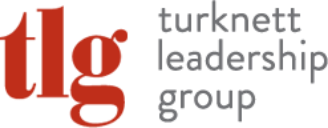
By Jonathan Palombo
Marketing Manager, TLGDr. Nicole Harp, aka, the creativity whisperer, is a successful coach, consultant, and author. Dr. Harp is currently a Senior Consultant with TLG, and also an executive coach at Personality Matters Inc., working along side President & CEO Dr. Cherry Collier (her sister). Dr. Harp works with her clients to unleash their full potential through a human-centered approach called Design Thinking that encourages collaborative, transparent, and iterative partnerships. We recently caught up with Dr. Harp to learn a little bit more about this approach, what the attributes are of an inclusive leader, and to discuss her latest children’s book, “Just Right Jillian“.
Q: What are the attributes of an inclusive leader?
Inclusive leaders are inclusive on purpose and making an ongoing series of deliberate choices. So one key attribute is intentional.
Inclusive leaders are disrupters. They work to disrupt the status quo, and our brains perceive this, rightfully so, as risky. So another attribute is courage. Inclusive leaders strive to implement and sustain change. It takes courage to travel new paths.
Inclusion isn’t an event. You can’t put it on your calendar, it’s not a one and done activity. In that regard, inclusive leaders adopt an inquiry stance. This means they are observant and curious. They ask action-oriented questions, to better understand the people and the environment and what else can be done to make sure people feel as if they belong. These are some of the top qualities that come to mind.
Q: What are the differences in your approach for guiding young people vs adult leaders in actively listening, welcoming diverse perspectives, or asking authentic questions?
My approach is pretty similar in that I have to be vulnerable, and show my own humanity so people have a psychologically safe space to challenge their own thinking. It’s natural to rebut diverse perspectives or defend our own ways of thinking or being, and those are the very things that block other perspectives from coming in. With both groups I celebrate the effort as well as the successes.
We dissect stories, both our own and others we hear, treating them as data (they are!). We take insights and ask ourselves what we want to try differently next time. People sometimes have a tendency to be hard on themselves, and I always remind them to be kind.
Q: What is design thinking and how does inclusion play a role in it?
Design thinking is a human-centered approach wherein the heart of solving a challenge is empathy. We start from really wanting to understand the perspectives of the people most impacted. It prioritizes humility and care, which is quite different from prioritizing outside expertise. The people effected by the proposed changes are experts, and the designers really seek to learn from them first. With that understanding, we experiment with solutions.
This approach can be inclusive, in that it based on the knowledge and experiences of the people. But, in order to truly devise the best solution, designers have to be intentional and seek diverse experiences. We also have to be open to surprising and divergent ideas to really have the best shot at designing an ideal solution.
Q: How do you challenge your clients to think differently and apply lasting change?
We spend a lot of time uncovering their “why” and tapping into their motivation. Honesty is the key here. I want clients to tell themselves the truth about where they want to be and how they want to show up, so we can work together to remove barriers to change.
Beyond that, I’m a creative and a scientist, and I really lean into those roles with clients. I encourage them to adopt a spirit of play and experimentation so they can relax and try new behaviors, new thoughts, and new paradigms.
Often, one of the biggest hurdles we encounter during our work together is fear of being, or even feeling, incompetent. Let’s face it: change is uncomfortable. We don’t know how things will turn out. But when you can decide, “Hey, I’m going try this out for a short time and see how it goes,” there’s less pressure on perfection. I work with them to feel less threatened, and to make the effort to change more appealing. I also incorporate a lot of celebration, so clients really notice and acknowledge small changes. This helps them to build discipline and momentum toward their goals.
Q: Tell us about a career highlight. What happened and what was the outcome?
One of my clients came to coaching with three big and diverse goals from leadership to personal wellness. She had been working on them a long time but without seeing results. Between sessions she began to try little experiments and debrief them with me. She gained so much clarity and confidence in such a short period of time. The true highlight for me is that it’s been several years since our engagement ended and she still regularly shares how well she’s sustained her changes and continues to make improvements. She’s excelling at her role and is thriving in all aspects of her life.
Q: Tell us about your newest book, “Just Right Jillian“. What inspired you to write it?
I’ve always wanted to be a children’s author – ever since elementary school. The truth is I had to overcome my own fears to be able to follow through with it. It only took me four decades! This book follows 5th grader Jillian, who is very smart but very shy. I remember being that shy child, unable to speak up, even when I really wanted to. When you’re shy, you feel trapped, and you can never really be your authentic self. I wrote this book as a love letter to shy children, to let them know they’re not alone.
Many of us – children and adults too – have this one big thing that stops us from living the lives we want to live. Whether it’s your life at home, your impact on your community, or your life as a leader at work, so many of us have this one thing holding us back from reaching our full potential. For Jillian that ‘one thing’ is a lack of confidence in herself. Ultimately, she decides to go after her goal, in the face of her doubts. The doubts didn’t go away, but she took action anyway. One of my goals was to inspire people to pursue their dreams, even when it feels scary.
My forthcoming novel, “The Many Fortunes of Maya“, explores similar themes. It’s about self-expression and learning to listen to your inner voice.

